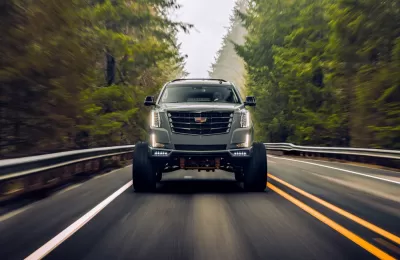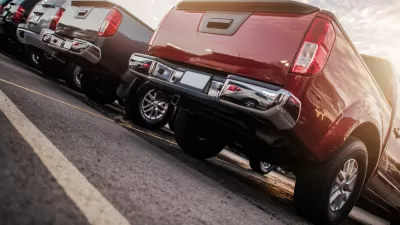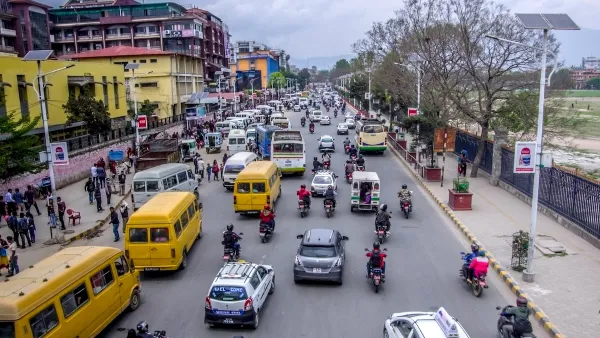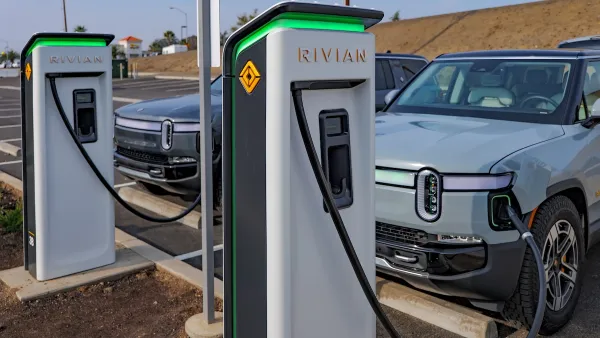Even with the growth of electric vehicles, experts say the trend toward larger, heavier vehicles is inherently incompatible with environmental goals.

Based on the amount of emissions they produced last year, the world’s SUVs are, collectively, the sixth largest emitter of carbon dioxide. Writing in The New Yorker, Elizabeth Kolbert points out that the average SUV releases 20 percent more carbon per mile driven than a medium-sized car.
“The move toward bigger and heavier vehicles, it seems pretty obvious, is incompatible with the goal of reducing global emissions.” So “Why is it that the world is moving toward heavier cars at a time when it should be doing precisely the reverse?”
One major reason, Kolbert writes, is the high price of SUVs, which are up to 51 percent more expensive than smaller cars, despite similar production costs. U.S. carmakers can also evade fuel efficiency standards by classifying vehicles as trucks. “Unfortunately, the electrical-vehicle tax credits approved last year as part of the Inflation Reduction Act give S.U.V.s similarly favorable treatment.”
In addition to carbon emissions, bigger vehicles also create more particulate pollution from tires and pose a higher risk to pedestrians. Experts suggest charging higher registration rates for heavier vehicles—a policy being considered in California—could discourage the proliferation of massive trucks and SUVs.
As Kolbert points out, replacing gas-powered cars with electric ones will only be a stopgap that reduces carbon emissions but creates other serious impacts on the environment and public safety. “Better still would be to ditch cars altogether.”
FULL STORY: Why S.U.V.s Are Still a Huge Environmental Problem

Planetizen Federal Action Tracker
A weekly monitor of how Trump’s orders and actions are impacting planners and planning in America.

The Simple Legislative Tool Transforming Vacant Downtowns
In California, Michigan and Georgia, an easy win is bringing dollars — and delight — back to city centers.

San Francisco's School District Spent $105M To Build Affordable Housing for Teachers — And That's Just the Beginning
SFUSD joins a growing list of school districts using their land holdings to address housing affordability challenges faced by their own employees.

In More Metros Than You’d Think, Suburbs are Now More Expensive Than the City
If you're moving to the burbs to save on square footage, data shows you should think again.

The States Losing Rural Delivery Rooms at an Alarming Pace
In some states, as few as 9% of rural hospitals still deliver babies. As a result, rising pre-term births, no adequate pre-term care and "harrowing" close calls are a growing reality.

The Small South Asian Republic Going all in on EVs
Thanks to one simple policy change less than five years ago, 65% of new cars in this Himalayan country are now electric.
Urban Design for Planners 1: Software Tools
This six-course series explores essential urban design concepts using open source software and equips planners with the tools they need to participate fully in the urban design process.
Planning for Universal Design
Learn the tools for implementing Universal Design in planning regulations.
Smith Gee Studio
City of Charlotte
City of Camden Redevelopment Agency
City of Astoria
Transportation Research & Education Center (TREC) at Portland State University
US High Speed Rail Association
City of Camden Redevelopment Agency
Municipality of Princeton (NJ)





























